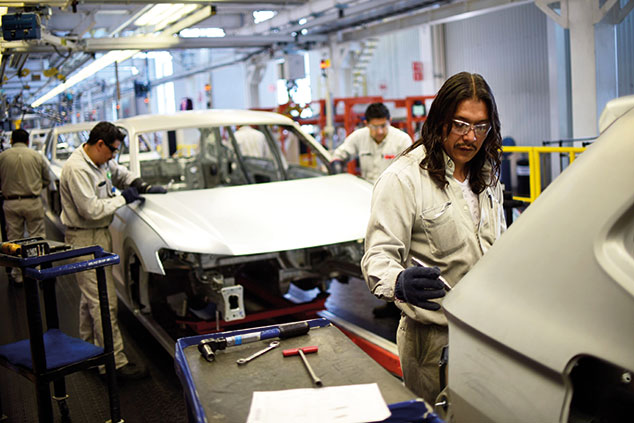
The move surprised markets, which had thought that US-Mexican disputes had been settled. Mexico’s peso slid to five-month lows against the US dollar. America’s S&P 500 has had its second-worst May since the 1960s, losing almost 7%. The Trump administration has also ended India’s special trade status, which had eliminated some tariffs on Indian imports, although the impact is expected to be limited for now.
More damage to come
Washington’s decision to drag immigration into the trade arena will disrupt ties between two closely aligned economies, says Jim Tankersley in The New York Times. Car parts “often cross the border as many as eight times as they travel through the supply chain”, so a 5% tariff on each crossing will compound quickly. Meanwhile, official statistics estimate that recent tariffs announced on China could cost the average American household up to $831 per year, erasing the impact of 2017’s tax cuts for all but the richest. For the “lowest-earning fifth” of taxpayers, who spend a higher proportion of their incomes on imports, the tariffs amount to an “effective tax increase of 1.1%”. Markets expect the Federal Reserve to step in if things get too dire. But as Michael Mackenzie points out in the Financial Times, with the US economy still looking reasonably healthy that may not happen soon, presaging a “tough summer” for stocks unless the White House suddenly reverses course.
“The optimistic view” is that market weakness could prod Trump back to the negotiating table, says Tom Stevenson in The Daily Telegraph. He regards the level of the Dow as “the scorecard of his presidency”. Yet this “Trump put” argument ignores China’s “deep-seated aversion” to being told what to do by foreigners. If it has concluded that Trump’s real aim is to keep China in “a state of permanent inferiority” then it may be loath to cut a last-minute deal.
A convenient excuse
The direct effect of the trade war on global GDP has been negligible so far, says Capital Economics. A lot of trade has just been redirected to other countries. Even when you factor in the hit to confidence, the standoff only accounts for a quarter of the past year’s global growth slowdown. Trade antics are a convenient excuse for other problems, agrees Daniel Moss on Bloomberg. China’s crackdown on debt, not tariffs, is responsible for its long-term slowdown. Some foreign businesses appear to be using tariffs as a long-awaited pretext to “reduce their China footprint”. Trump’s “trade war needs to fire its PR team”.
Nowhere to hide from the trade war
By contrast, about 45% of Europe’s GDP comes from exports, leaving the continent’s economies exposed to a global trade slowdown. Interest rates are already negative. Japanese and European carmakers earned a reprieve from Trump on new car tariffs last month, but his capricious decision to penalise Mexico is a reminder that US policy can change at any moment.
That unpredictability is a problem for emerging markets too, says Udith Sikand, also for Gavekal Research. Vietnam has been a popular play for those looking for a trade-war winner, but it could soon find itself being labelled a “currency manipulator” by Washington. That threat, coupled with the sheer scale of China’s manufacturing industry, makes it unlikely that there will be a “wholesale shift of manufacturing away from China”, as some have predicted. South Korea is one Asian economy already showing signs of strain. Slowing global demand for semiconductors helps explain why GDP shrank 0.4% in the first quarter. The Korean won has fallen to its lowest levels in two-and-a-half years, says Sotaro Suzuki for Nikkei Asian Review. With overseas shipments accounting for more than 40% of GDP, worsening trade relations have prompted foreign funds to flee the country.